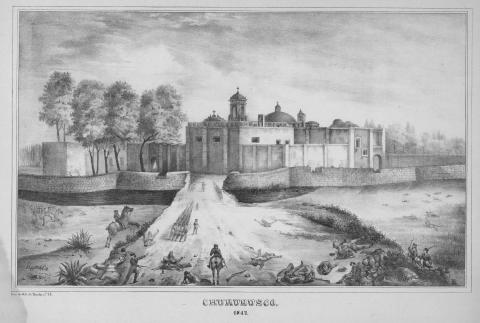Biographies | Correspondence | Diaries & Journals | Music & Poetry | Newspapers | Images | Maps
Since his defeat at Cerro Gordo, Santa Anna had again managed to raise another army. Numbering 36,000, it had spent the summer months fortifying the approaches to the city, taking advantage of the natural obstacles in the surrounding area. During the first week of August, Winfield Scott left Puebla with 14,000 troops and began his march toward the Mexican capital. One week later the army descended into the Valley of Mexico.
On August 19, U.S. troops attacked General Gabriel Valencia's Army of the North in the neighborhood of Contreras, southwest of the city. A long-standing and bitter feud between Valencia and Santa Anna hampered the Mexican defense, and by 6 a.m. the following day Valencia's line had collapsed. The remnants of Valencia's forces fell back to the Churubusco, five miles from the capital, where they joined Santa Anna's forces. With U.S. troops in pursuit, Santa Anna ordered General Pedro Anaya to cover his retreat. Much of the fighting occurred at the convent of Santa María de Churubusco, whose defenders included the San Patricio Battalion, foreign-born deserters from the U.S. army who were determined not to be taken prisoner. The fighting continued until the Mexican forces ran out of ammunition. Seventy-two members of the San Patricios were among the Mexican troops who surrendered.
The two battles—Contreras and Churubusco—had eliminated 10,000 Mexican troops from the defense of the city. Scott's losses were also significant: more than 10% of his army killed, wounded, or missing.
,p> Having received information that the Mexican government was ready to discuss peace terms, Scott halted his attack. When negotiations broke down two weeks later, the stage was set for the climactic battle for Mexico City.

